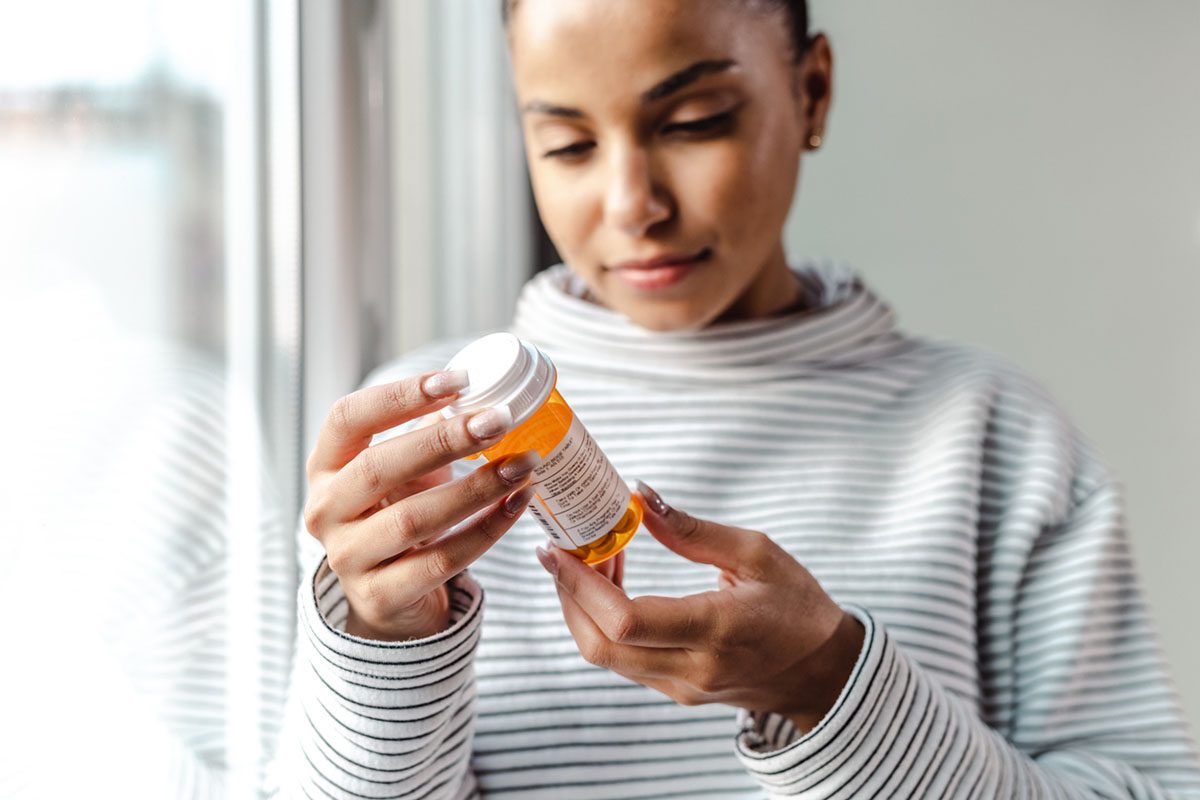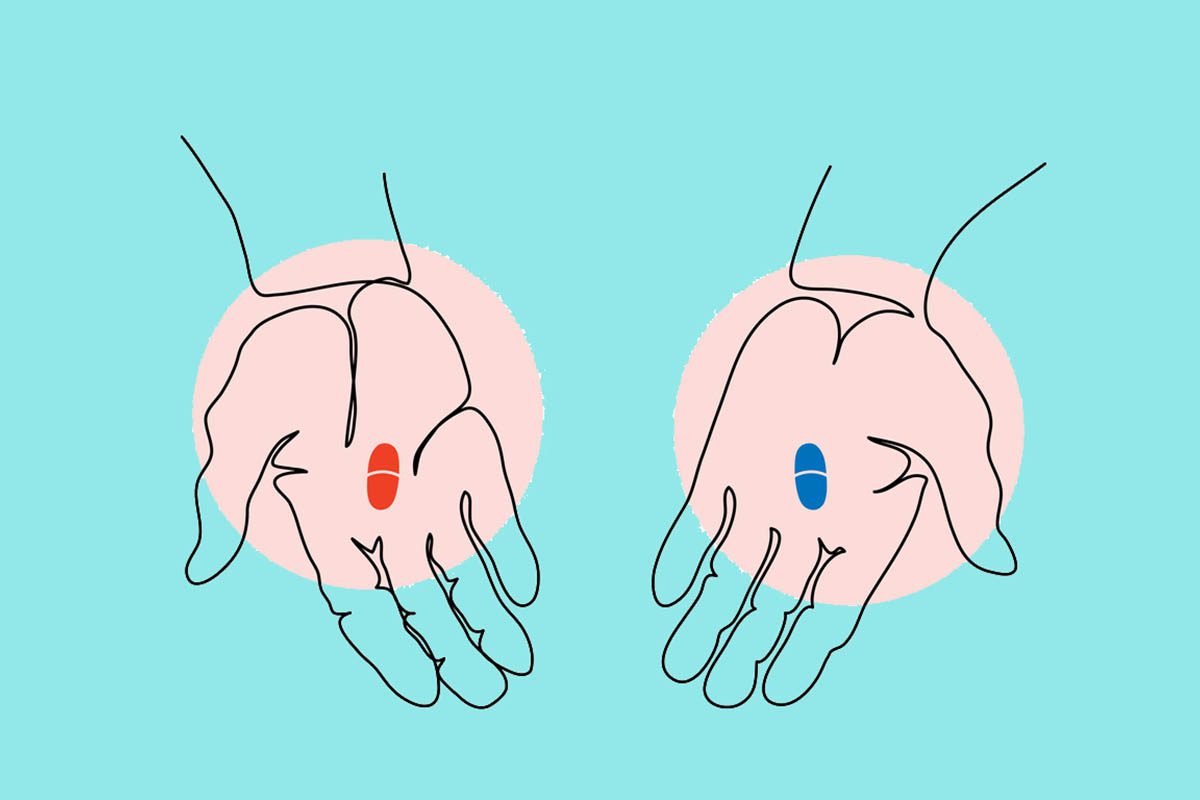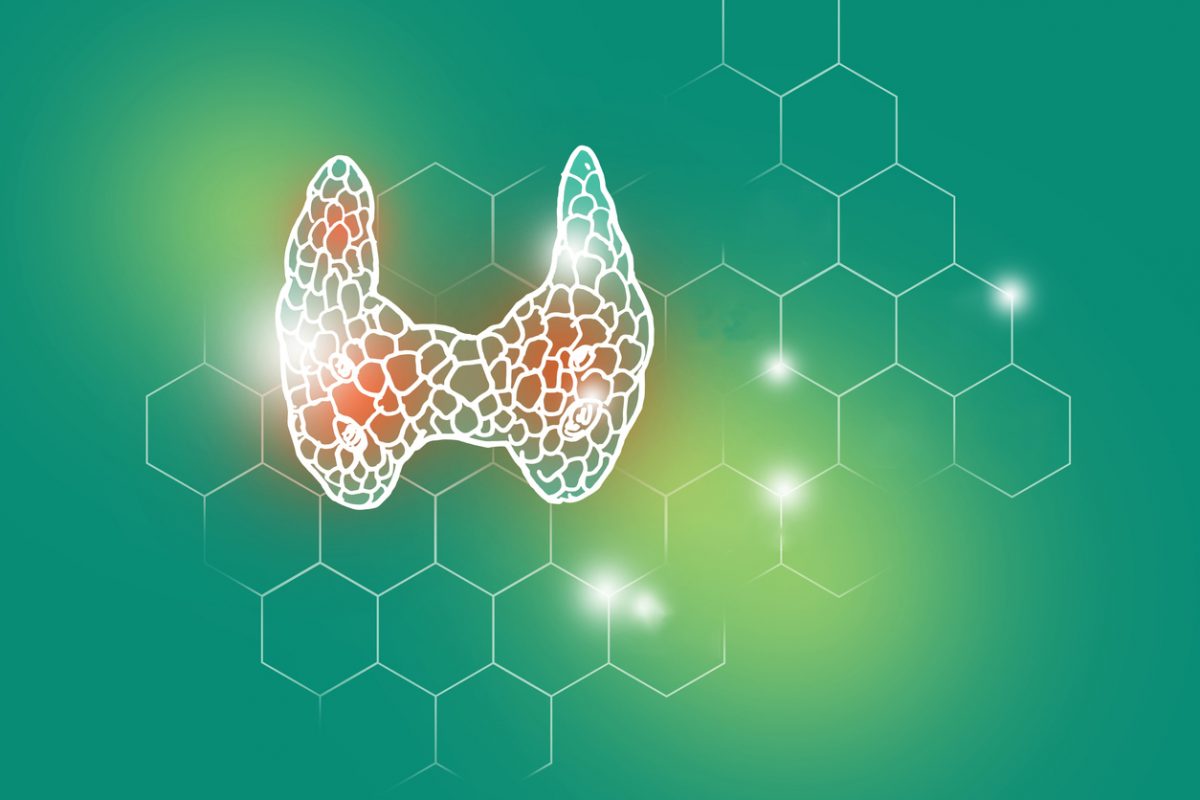
Updates and Trends in the Treatment of Major Depressive Disorder
Mental illness accounts for 7.4% of the total disease burden worldwide—more than HIV/AIDS, tuberculosis, or diabetes—making it the leading cause of years lost to disability.1 Depressive disorders make up 40.5% of that disability, the most of all mental illnesses. Despite the devastating global effects of depression, a report on approval trends by the US Food and Drug Administration (FDA) found that new molecular entities (NMEs) approved for targeting psychiatric illness peaked in the 1960s and have been declining since.2 Indeed, of the 27 NMEs approved by the FDA in 2013, only 1 had psychiatric indications,3 highlighting the slow pace of psychiatric drug discovery.4 Despite this, recent progress has been made. In this article, our aim is to (1) describe recently FDA-approved medications for major depressive disorder (MDD), as well as adjunctive therapies studied during the period 2013 to 2014 (study completion, publication, or meeting reports), and (2) discuss the current trends in novel antidepressant therapies.
Update on the Recently Approved Medications for Depression
Vortioxetine. Approved by the FDA in 2013 for treatment of MDD, vortioxetine is believed to exert its novel mechanism of action by combining direct serotonin receptor modulation with serotonin transporter inhibition. A recent review of both preclinical and clinical data5 suggests that vortioxetine may interrupt negative feedback mechanisms that control neuronal activity in brain areas implicated in MDD (ie, the dorsal and median raphe nuclei and the prefrontal cortex). Pearce and Murphy6 recently reviewed the clinical efficacy data from 10 short-term (6-8 weeks), 1 relapse-prevention, and 3 long-term extension trials of vortioxetine, with doses ranging from 2.5-20 mg/d. Several of these trials demonstrated significant antidepressant efficacy for vortioxetine compared to placebo at doses of 5, 10, and 20 mg.6 Compared to placebo, vortioxetine has also been shown to have positive effects on various measures of cognitive functioning, including executive functioning, in younger and older depressed patients.7,8 This is novel for antidepressants; duloxetine did not separate from placebo on executive functioning in 1 study.7 In addition, vortioxetine may offer an advantage due to its long half-life, as this permits once-daily dosing and decreases the risk of withdrawal symptoms.6 Although vortioxetine is associated with significantly increased sexual dysfunction at the 20-mg dosage compared to placebo, it has been shown to be superior to resolving previous treatment-emergent sexual side effects upon switch compared to the selective serotonin reuptake inhibitor (SSRI) escitalopram.9,10
Levomilnacipran. Levomilnacipran, the fifth agent in the serotonin-norepinephrine reuptake inhibitor (SNRI) class, was approved by the FDA in 2013. It is the more potent enantiomer of milnacipran, a medication currently approved for treating fibromyalgia in the United States (and depression in the European Union). Unlike the other “dual-action” agents, levomilnacipran is more potent in blocking uptake of norepinephrine than serotonin, although the latter effects increase with ascending doses. An analysis of pooled data from 5 randomized, double-blind, placebo-controlled studies (N = 2,598) found that patients receiving levomilnacipran extended-release (40-120 mg/d) had significantly greater decreases in Montgomery-Asberg Depression Rating Scale (MADRS) scores (−15.8 vs −12.9, respectively, P < .001) than those receiving placebo.11 Another pooled analysis found significant improvements in psychosocial functioning with levomilnacipran versus placebo.12 Although it appears to have a favorable weight gain profile versus placebo, levomilnacipram has been associated with increases in blood pressure and heart rate, underscoring the need to control and monitor cardiovascular health.13 Indeed, serotonin reuptake inhibitor comparator studies are lacking, rendering it difficult to contrast any potential advantages of this agent versus other SNRIs or SSRIs.
Adjunctive/Augmentation Strategies
Lisdexamfetamine dimesylate augmentation of escitalopram. Lisdexamfetamine dimesylate (LDX) is an inactive prodrug that is metabolized to dextroamphetamine and is approved in the United States for the treatment of attention-deficit/hyperactivity disorder. In unremitted depressed patients (n = 129) and remitted patients with residual symptoms (n = 173) taking escitalopram (20 mg/d), Trivedi and colleagues14 examined the efficacy and safety of LDX augmentation (20-50 mg/d). Although trends were noted favoring LDX, none of the differences in change scores or remission were significant at P < .05, although over 90% of their sample had anxious depression, a traditionally difficult-to-treat subtype.15 Subsequent phase 3 trials (N = 830) of similar design found that reductions in MADRS scores following LDX augmentation did not differ significantly from those seen in placebo groups (trial 1: −6.1 vs −6.3, respectively; P = .88; trial 2: −7.3 vs −6.8, respectively; P = .58). Given the disappointing results, development of LDX for depression was discontinued.16
Edivoxetine augmentation of SSRIs. A 10-week randomized, double-blind, placebo-controlled phase 2 trial17 examined the efficacy and tolerability of edivoxetine (LY2216684), a highly selective norepinephrine reuptake inhibitor, as adjunctive therapy (6-18 mg/d) in partial SSRI responders with MDD (N = 131). The edivoxetine group had significantly higher rates of remission compared to the placebo group (24.2% vs 11.8%, respectively; P = .044) when analyzed with the last-observation-carried-forward approach. Unfortunately, 3 subsequent phase 3 trials completed by Eli Lilly failed to show efficacy for adjunctive edivoxetine, thereby halting its further development for MDD.18
Dexmecamylamine augmentation of SSRIs/SNRIs. Depression has been associated with a hypercholinergic state in some cases.19 Indeed, the antimuscarinic drug scopolamine has been shown to decrease symptoms of depression in treatment-resistant patients.20 The hypercholinergic state of depression may also be partially mediated through excessive neuronal nicotinic receptor activation.21 Mecamylamine, an antagonist of the neuronal nicotinic receptor, was found to be superior to placebo in primary and secondary outcomes for depression when used as an augmentation agent to citalopram.22 Subsequently, dexmecamylamine (TC-5214) 1-4 mg twice daily, also a nicotinic receptor antagonist, was compared with placebo in 2 identical phase 3 trials as augmentation in depressed patients (N = 614) resistant to their current SSRI/SNRI.23 Although depression scores on the MADRS (the primary outcome measure) decreased in both groups, no significant differences were seen between dexmecamylamine and placebo in either study.
Cognitive-behavioral therapy augmentation of usual care. Cognitive-behavioral therapy (CBT) has generally comparable outcomes to alternative pharmacologic strategies in depressed patients unresponsive to first-line citalopram.24 The CoBalT trial (N = 469) compared CBT as an adjunct to usual care (counseling, medications, etc) with usual care alone for the treatment of primary care patients with resistant depression.25 Approximately 46% of the CBT group met criteria for response at 6 months, compared to only 22% of the usual care group (P < .001). These findings highlight the possible effectiveness of adjunctive CBT in the management of real-world patients with treatment-resistant depression.
Trends in Antidepressant Therapies With Novel Mechanisms of Action
Ketamine. Since Berman and colleagues26 first described ketamine’s rapidly acting antidepressant properties nearly 15 years ago, ketamine research in psychiatry has quickly expanded. Other randomized, double-blind, placebo-controlled trials27,28 have confirmed ketamine’s superior rapid (within 110 minutes), robust (across a variety of symptoms), and relatively sustained (approximately 7 days) antidepressant efficacy at subanesthetic intravenous doses in well-characterized patients with treatment-resistant depression. More recent studies using midazolam as an active comparator29 (thereby establishing that the effects of ketamine are not largely due to unblinding) and intranasal administration30 (for easier administration) continue to yield promise in the treatment of depression.
Lanicemine. Lanicemine (AZD6765), a low-trapping NMDA-receptor blocker, has been studied in both preclinical31 and clinical31,32 settings as a possible glutamatergic alternative to ketamine. Zarate and colleagues32 administered a single infusion of intravenous lanicemine (150 mg) to 22 medication-free patients with treatment-resistant depression in a double-blind, randomized, crossover, placebo-controlled trial. MADRS scores were significantly decreased in patients receiving lanicemine versus placebo within 80 minutes—a finding comparable to the rapid antidepressant onset of ketamine. This decrease remained significant only through 110 minutes (d = 0.4). Similarly, significant improvements were found on the Hamilton Depression Rating Scale at 80 and 110 minutes postinfusion, as well as day 2 (d = 0.49). In the most elaborate definitive study conducted to date, 124 depressed patients were randomly assigned to repeated infusions (3 infusions/wk for 3 weeks) of lanicemine 100 mg or 150 mg or placebo as adjunctive therapy to current antidepressants.31 A 5-week additional observation period followed. Patients receiving either dose of lanicemine exhibited a significantly greater decrease in MADRS scores from baseline to week 3 (P < .02). Further post hoc testing suggested that this score reduction persisted for up to 5 weeks after the final infusion in the group receiving 100 mg (P < .05), demonstrating that repeated doses of an antiglutamatergic drug produce both rapid and sustained effects. Of note, no significant differences were found between lanicemine and placebo with regard to psychotomimetic or dissociative side effects,31,32 highlighting a safety advantage over ketamine. Lanicemine remains under investigation, although these findings underscore the concept that antiglutamatergic agents can improve symptoms of depression without having unwanted psychotomimetic and dissociative side effects.
Opioid system modulators. The antidepressant properties of opioid system modulators are currently being explored, as this system may be implicated in the pathophysiology and treatment of MDD.33,34 Alkermes is currently in phase 3 trial testing of ALKS 5461, a sublingual compound that combines buprenorphine (a µ- and κ-opioid receptor agonist) and samidorphan (a µ-opioid receptor antagonist). Results of a completed phase 2 study in MDD utilizing the parallel-sequential study design35 yielded encouraging results, with significant decreases in depression rating scale scores and generally favorable tolerability.36 Phase 3 trials are underway.
Summary
During the time period of interest, there have been several advances with respect to new and novel treatment development for MDD, as well as considerable disappointments. Specifically, 2 new medications were approved by the FDA in 2013 as monotherapy for MDD. Vortioxetine may offer an advantage by enhancing cognitive function, particularly executive functioning, which is evolving as an important independent measure of efficacy in MDD trials, although a second confirmatory head-to-head clinical trial with an SNRI or SSRI is warranted. Finally, although levomilnacipran is approved for depression, more trials are needed to examine whether, and the extent to which, any clinically meaningful differences exist between levomilnacipran and other antidepressants.
Unfortunately, few recently studied augmentation strategies have provided sufficient evidence for changing the current clinical practices in the treatment of depression, as 3 different compounds were unsuccessfully studied in phase 3 trials. The only exception is an encouraging study25 examining adjunctive CBT in MDD. However, there is promise for the use of glutamatergic and opioid-system modulators in treating depression. Such novel mechanisms of action may be critical for the treatment of depressed patients, especially those unresponsive to traditional monoaminergic strategies.
Author affiliations: Department of Psychiatry, Massachusetts General Hospital, Boston.
Potential conflicts of interest: Dr Papakostas has served as a consultant for Abbott, AstraZeneca, Avanir, Brainsway, Bristol-Myers Squibb, Cephalon, Dey, Eli Lilly, GlaxoSmithKline, Evotec, H. Lundbeck, Inflabloc, Jazz, Novartis, Otsuka, Pamlab, Pfizer, Pierre Fabre, Ridge Diagnostics (formerly known as Precision Human Biolaboratories), Shire, Sunovion, Takeda, Theracos, and Wyeth; has received honoraria from Abbott, AstraZeneca, Avanir, Bristol-Myers Squibb, Brainsway, Cephalon, Dey, Eli Lilly, Evotec, GlaxoSmithKline, Inflabloc, Jazz, H. Lundbeck, Novartis, Otsuka, Pamlab, Pfizer, Pierre Fabre, Ridge Diagnostics, Shire, Sunovion, Takeda, Theracos, Titan, and Wyeth; has received research support from AstraZeneca, Bristol-Myers Squibb, Forest, National Institute of Mental Health, Pamlab, Pfizer, Ridge Diagnostics (formerly known as Precision Human Biolaboratories), Sunovion, and Theracos, Inc; and has served (not currently) on the speakers bureau for Bristol-Myers Squibb and Pfizer. Dr Ionescu reports no potential conflict of interest.
Funding/support: None reported.
Previous presentation: This article is based on an update lecture presented at the American Society for Clinical Psychopharmacology Annual Meeting; June 16-19, 2014; Hollywood, Florida.
Corresponding author: George I. Papakostas, MD, Massachusetts General Hospital, Clinical Trials Network and Institute and Depression Clinical and Research Program, 1 Bowdoin Square, 6th Fl, Boston, MA 02114 ([email protected]).
References
1. Whiteford HA, et al. Lancet. 2013;382(9904):1575-1586. PubMed doi:10.1016/S0140-6736(13)61611-6
2. Kinch MS, et al. Trends in pharmaceutical targeting of clinical indications: 1930-2013 [published online ahead of print May 29, 2014]. Drug Discov Today. PubMed doi:10.1016/j.drudis.2014.05.021
3. Kesselheim AS, Darrow JJ. N Engl J Med. 2014;370(26):e39. PubMed doi:10.1056/NEJMp1402114
4. Hyman SE. Sci Transl Med. 2012;4(155):155cm11. PubMed doi:10.1126/scitranslmed.3003142
5. Sanchez C, et al. Vortioxetine, a novel antidepressant with multimodal activity: review of preclinical and clinical data [published online ahead of print July 9, 2014]. Pharmacol Ther. PubMed doi:10.1016/j.pharmthera.2014.07.001
6. Pearce EF, Murphy JA. Ann Pharmacother. 2014;48(6):758-765. PubMed doi:10.1177/1060028014528305
7. Katona C, et al. Int Clin Psychopharmacol. 2012;27(4):215-223. PubMed doi:10.1097/YIC.0b013e3283542457
8. McIntyre RS, et al. Int J Neuropsychopharmacol. 2014;17(10):1557-1567. PubMed doi:10.1017/S1461145714000546
9. Jacobsen P, et al. Randomized, double-blind, head-to-head, flexible-dose study of vortioxetine vs escitalopram in sexual functioning in adults with well controlled major depressive disorder experiencing treatment-emergent sexual dysfunction. Presented at the 29th CINP World Congress of Neuropsychopharmacology; June 25, 2014; Vancouver, BC, Canada. Abstract LP-03-018.
10. Garnock-Jones KP. CNS Drugs. 2014;28(9):855-874. PubMed doi:10.1007/s40263-014-0195-x
11. Montgomery SA, et al. Efficacy of levomilnacipran extended-release in major depressive disorder: pooled analysis of 5 double-blind, placebo-controlled trials [published online ahead of print June 5, 2014]. CNS Spectr. PubMed doi:10.1017/S1092852914000273
12. Sambunaris A, et al. Int Clin Psychopharmacol. 2014;29(4):197-205. PubMed doi:10.1097/YIC.0000000000000033
13. Citrome L. Int J Clin Pract. 2013;67(11):1089-1104. PubMed doi:10.1111/ijcp.12298
14. Trivedi MH, et al. J Clin Psychiatry. 2013;74(8):802-809. PubMed doi:10.4088/JCP.13m08360
15. Ionescu DF, et al. Prim Care Companion CNS Disorders. 2014;16(3):doi:10.4088/PCC.13r01621. doi:10.4088/pcc.13r01621 PubMed
16. Shire reports top-line results from two phase 3 studies for Vyvanse (lisdexamfetamine dimesylate) capsules (CII) as an adjunctive treatment for adults with major depressive disorder [press release]. Basingstoke, UK: Shire; February 6, 2014. http://www.shire.com/shireplc/en/investors/investorsnews/irshirenews?id=921.
17. Ball S, et al. J Affect Disord. 2014;167:215-223. PubMed doi:10.1016/j.jad.2014.06.006
18. Lilly announces edivoxetine did not meet primary endpoint of phase III clinical studies as add-on therapy for major depressive disorder [press release]. Indianapolis, IN: Eli Lilly; December 5, 2013. http://lilly.mediaroom.com/index.php?s=9042&item=137263.
19. Janowsky DS, Overstreet DH. The Role of Acetylcholine Mechanisms in Mood Disorders. New York, NY: Raven Press; 1995.
20. Furey ML, Drevets WC. Arch Gen Psychiatry. 2006;63(10):1121-1129. PubMed doi:10.1001/archpsyc.63.10.1121
21. Shytle RD, et al. Mol Psychiatry. 2002;7(6):525-535. PubMed doi:10.1038/sj.mp.4001035
22. Lindsley CW. ACS Chem Neurosci. 2010;1(8):530-531. PubMed doi:10.1021/cn100070s
23. Vieta E, et al. Eur Neuropsychopharmacol. 2014;24(4):564-574. PubMed doi:10.1016/j.euroneuro.2013.12.008
24. Thase ME, et al. Am J Psychiatry. 2007;164(5):739-752. PubMed doi:10.1176/appi.ajp.164.5.739
25. Wiles N, et al. Lancet. 2013;381(9864):375-384. PubMed doi:10.1016/S0140-6736(12)61552-9
26. Berman RM, et al. Biol Psychiatry. 2000;47(4):351-354. PubMed doi:10.1016/S0006-3223(99)00230-9
27. Sos P, et al. Neuroendocrinol Lett. 2013;34(4):287-293. PubMed
28. Zarate CA Jr, et al. Arch Gen Psychiatry. 2006;63(8):856-864. PubMed doi:10.1001/archpsyc.63.8.856
29. Murrough JW, et al. Am J Psychiatry. 2013;170(10):1134-1142. PubMed doi:10.1176/appi.ajp.2013.13030392
30. Lapidus KA, et al. A randomized controlled trial of intranasal ketamine in major depressive disorder [published online ahead of print April 3, 2014]. Biol Psychiatry. PubMed doi:10.1016/j.biopsych.2014.03.026
31. Sanacora G, et al. Mol Psychiatry. 2014;19(9):978-985. PubMed
32. Zarate CA Jr, et al. Biol Psychiatry. 2013;74(4):257-264. PubMed doi:10.1016/j.biopsych.2012.10.019
33. Berrocoso E, et al. Curr Pharm Des. 2009;15(14):1612-1622. PubMed doi:10.2174/138161209788168100
34. Garriock HA, et al. Am J Psychiatry. 2010;167(5):565-573. PubMed doi:10.1176/appi.ajp.2009.08081167
35. Fava M, et al. Psychother Psychosom. 2003;72(3):115-127. PubMed doi:10.1159/000069738
36. Alkermes announces positive results from phase 2 clinical study of ALKS 5461 for major depressive disorder [press release]. Dublin, Ireland: Alkermes; April 17, 2013. http://investor.alkermes.com/phoenix.zhtml?c=92211&p=irol-newsArticle&ID=1807510.
J Clin Psychiatry 2014;75(12):1419-1421 (doi:10.4088/JCP.14ac09610).
© Copyright 2014 Physicians Postgraduate Press, Inc.



